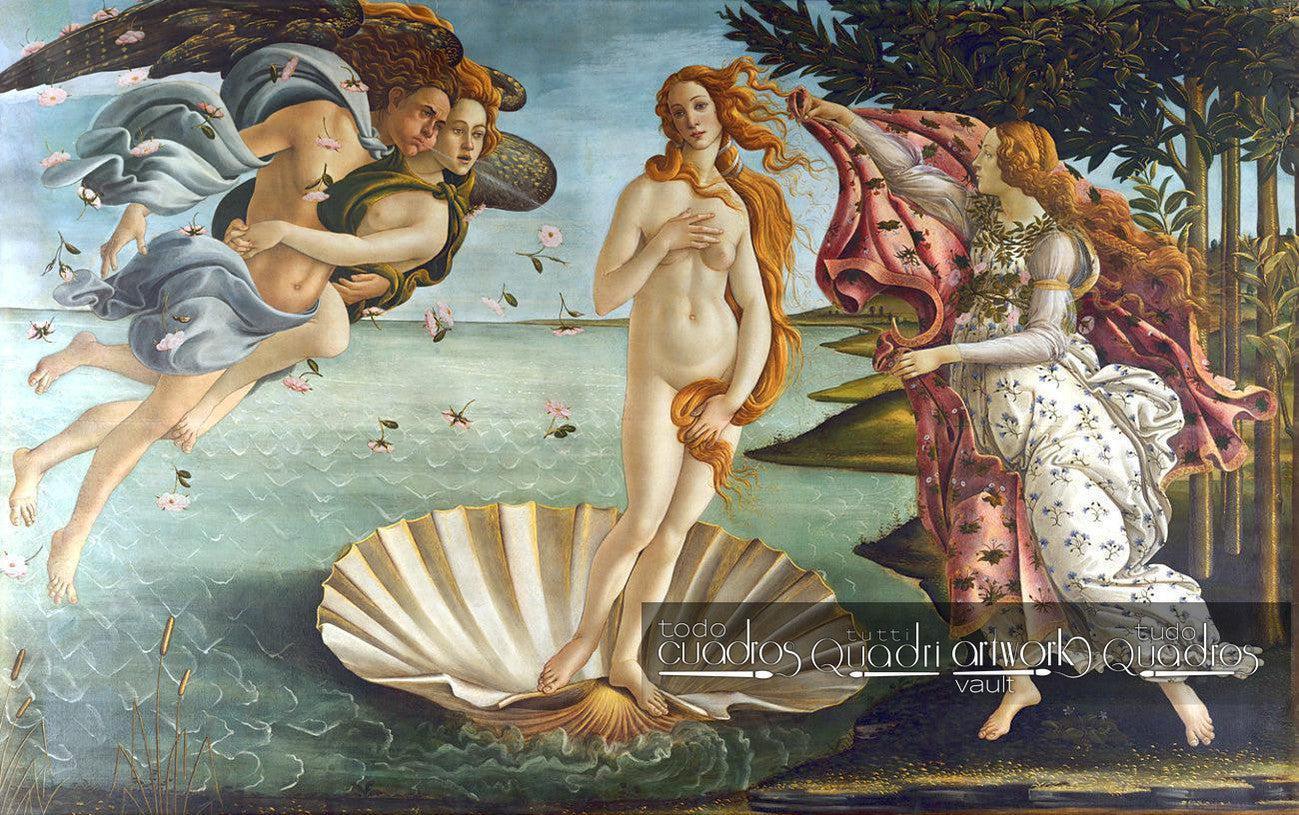
The Birth of Venus, Botticelli
- Oil on linen canvas
- 100% hand-painted
- Painting reproduction
- Available for online purchase
- See quality
- Shipping
- Money-Back Guarantee
- Reviews
| Author: | Sandro Botticelli |
|---|---|
| Style: | Renaissance |
| Medium | Óleo |
| Support: | Lienzo |
| Year: | 1485 |
| Located: | Museo de los Uffizi |
Shipping and taxes included
The painting The Birth of Venus, painted by Sandro Botticelli between 1483 and 1485, is currently housed in the Uffizi Gallery in Florence.
In the painting, Venus is depicted rising at the center of the work, accompanied by three other figures. On the left, Zephyr warms the goddess with his breath; next to him, a female figure, probably a nymph or the embodiment of the wind Aura or Bora; on the right, another female figure, one of the Horae, stands while offering a floral veil to Venus.
The painting is a classic of Renaissance iconography that is still recognized today as one of the most famous in the history of Western art. To conclude, we cannot fail to mention another great masterpiece by the artist: La Primavera, (link to the painting) probably earlier than The Birth of Venus and also available in our online store.
Choose options

The Birth of Venus, Botticelli
Sale price€895,00 EUR
Why is this painting famous?
The modern fame of The Birth of Venus by Sandro Botticelli was cemented in the 19th century, when the rediscovery of Botticelli by the British Pre-Raphaelites brought him back to public and critical attention after centuries of relative obscurity. Since its entry into the collection of the Uffizi Gallery in 1815, it became one of the most sought-after works for Grand Tour travelers, and in the 20th century it took its place in one of the museum’s most visited rooms, where it remains a main attraction.The image of Venus upon the shell has been reproduced endlessly in official tourism campaigns for Florence and in international exhibitions that have loaned the work under strict security measures, multiplying its media coverage. Its dissemination has also been reinforced by its constant presence in school textbooks, book covers, and television documentaries on the Renaissance. In the digital age, the painting has reached a new dimension of popularity, becoming a recurring resource for memes, artistic reinterpretations, and high-profile fashion campaigns, ensuring its continuous circulation in social media and the press.
Discover more famous paintings

